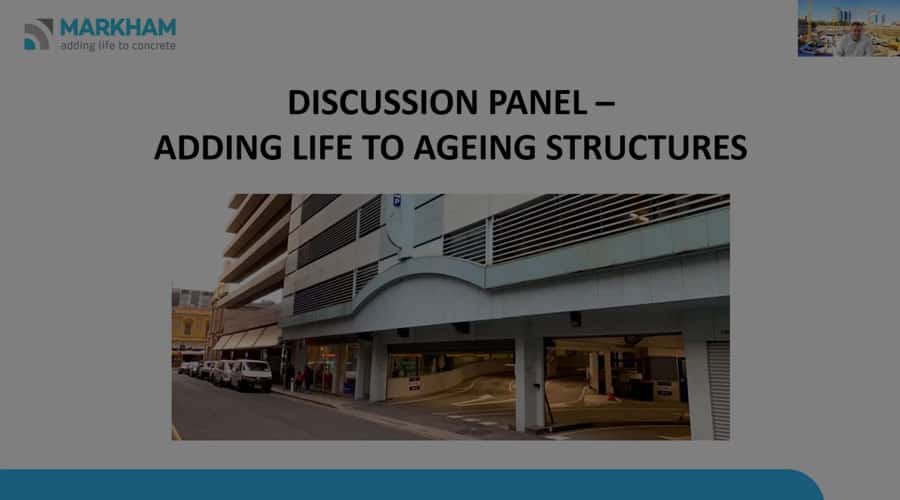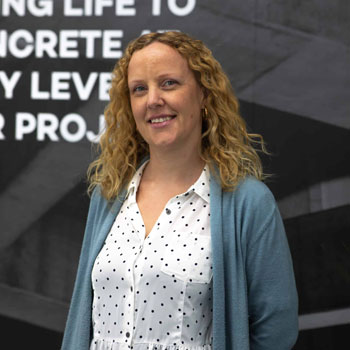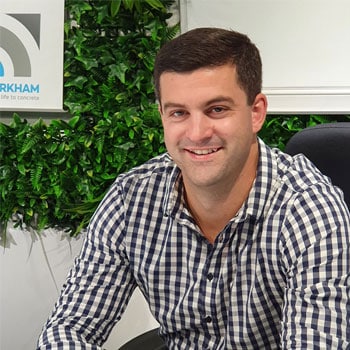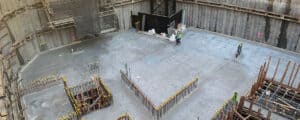Adding Life to Ageing Structures

Discussion Panel – Adding Life to Ageing Structures
Webinar Show Notes
There’s cracks in that structure! markhamglobal.com/theres-cracks-in-that-structure
Sustainability and concrete markhamglobal.com/sustainability-and-concrete-2
Cost-effective maintenance for car park concrete markhamglobal.com/cost-effective-maintenance-for-car-park-concrete
Learning Outcomes
- How important it is to extend concrete structure’s service life?
- What are the underlying challenges in adding life to concrete structures?
- How does MARKHAM deal with these challenges?
VENUS: Kia ora! Good day everyone! Thank you all for being here today. The discussion panel is a bit new for our MARKHAM Webinars. But we came to get into the science and practical challenges of Adding Life to Ageing Structures.
Before we dive in, we’ll introduce ourselves. I’m Venus Flaws, part of the administration team here at MARKHAM in Napier. We have Martin Prestidge from Napier also, Doug Hamlin is from Napier but he’s coming through from Nelson today, and we have Brad Fulcher beaming in from Sydney. Martin, would you like to say a bit about yourself, and Doug and Brad will follow?
MARTIN: Thank you, Venus. I’m Martin Prestidge. I’ve been with the company for a few years now, worked across the construction sector and the concrete durability sector with civil concrete repair companies and asset owners. So that’s me. Doug, good to see you, down in Nelson.
DOUG: Hey, likewise, Martin. Thanks for that. Briefly, I’ve been working with MARKHAM for just on 10 years. Started off in a project management role in work and design and specification in civil structures; that’s across Australia and New Zealand. Over to you, Brad.
BRAD: Thanks, Doug. Good to see everybody. Thanks for joining us. I’m Brad Fulcher from the Sydney office. I work mainly on Australian projects; I work in the construction and also the civil remediation area. So I work a lot with engineers and architects, and also, of course, end-users as well, looking at ways to improve the design life and life of their structures. That’s me, thanks.
VENUS: Great! So the presentation is going to take about 20 minutes, and then the guys will respond to your live questions afterwards. There is a little Q&A button just below on the floating toolbar. So if you have any questions at any time, you can just write them in there and I’ll ask them afterwards. Let’s get into it.
Martin, how important do you think it is to extend concrete structure’s service life in today’s world?
MARTIN: Thank you, Venus. Yes, very important. We’re seeing a lot of premature deterioration of concrete structures, whether that’s because they’ve been built to budgets, maybe in environments that we have traditionally not been building in. But what we see is extensive repairs being required before they’ve made the end of their design life. So cycles of breakout repairs and inspections kicking in before they’re intended.
The other side to that is, a lot of ageing structures and the infrastructure are being required to keep going a lot longer than the existing design life. With the growing population and limited budgets, it’s no longer feasible to knock down and restructure when it gets to the end of its design life. So extending the design life of structures, and then increasing the design life of modern structures is very important as well. You’ve probably got a few comments on that, Brad.
BRAD: Thanks, Martin. Yes, some great points there. Obviously, as you say, it is very important. The flip side of structures being used for longer or lasting longer, if possible, is also those cost savings for everybody really; you’ve got the taxpayers obviously that bear the brunt, to build new structures. So definitely, a very important part of what we do and what a lot of people out there are doing is making those structures last longer and stronger.
VENUS: That sounds like quite a challenge. And what are the underlying reasons for that, Doug?
DOUG: Yes, I think Brad and Marty have outlined the problem there quite well. I guess, looking at some of the concrete itself and some of the science; concrete has really got one major flaw with it, and that’s the fact that it leaks moisture; not only leaks moisture into it, but it also lets it move around. This, if it’s just normal concrete, is fine. But as soon as you start thinking about the reinforcing steel, and then you start thinking about it might be in a marine environment with chlorides or salts, or it could be a structure under acid attack, this moisture actually takes these contaminants through the concrete and starts breaking the concrete down.
But worse, it gets through to the reinforcing steel and starts that corrosion process. So I guess if you put it down to one factor, it would be the moisture movement in concrete leads to a lot of these structures not meeting their service life, or breaking down once they get well on in their service life.
Just lastly, before I hand it back, the cycle of deterioration in concrete accelerates very fast. So if you think about it in terms of a graph, it’s an exponential rate of deterioration; it’s not linear or flat by any means. So the costs associated with repair escalate very quickly over time. Hope that helps.
VENUS: So if you’re seeing these challenges frequently, what do we have to offer?
MARTIN: I thought we could have a look at some case studies, probably the easiest way to explain which way we can help sustain the life of these structures. So we get a lot of asset owners, this is a typical one we did in Adelaide. So you get the asset owners, they’re not spending any money through the life of this project, realize that they’ve got a structure in the middle of the CBD that they actually get a good income off, and then suddenly need to increase its design life. This was one of your projects, Brad, one of your favourite cities, down there in Adelaide.
BRAD: Yes, a hundred percent! It’s a beautiful city, the City of Churches, I think they call it. So that’s the Rundle Street car park right in the middle of Adelaide. We got involved with it quite early on with the engineers that were looking at this one. So as Martin said, they were reaching the end of design life, they were looking at what sort of the condition was, and also what could be done to improve its condition. The end goal obviously was to extend the life of the structure.
But they had a few issues with the structure, which are your typical issues, I suppose on this sort of structure. They had some contaminants brought in by the cars, so they had carbonation issues. They also had some corrosion issues with the steel. So in areas, the steel had actually rusted and broken out, so there was concrete cracked, and also breaking away.
There was a bit of a two-part system for this. They obviously wanted to repair the broken concrete and then make sure that the structure would last. So we came in with one of our AQURON hydrogel sealing products; an internal treatment. So once repairs were done to the structure, we came in and we spray-applied our treatment to it. This was for two purposes: the first being to stop any further contaminants coming into the concrete, and then also any contaminants that were in the concrete, locking them up and stopping them from causing more damage.
This one was a fairly interesting project actually, smack bang in the middle of the COVID times. So part of our service is, we inspect the structures ourselves. So trying to get down there was fairly difficult, but we managed it. Then as well as with the application, we go down there and make sure it’s done up to scratch of course. Doug, do you want to run through why the hydrogel is a good fit for these sorts of projects and how it works?
DOUG: Yes, sure thing. So as you can see on the slide there, you can see what I was talking about with untreated concrete. See the moisture ingress in there? Imagine that’s moving around.
In short, what we’re doing with hydrogels is, it’s a colloidal silica base that reacts with the alkalis in the concrete pours – these are naturally found there in concrete – and we form a hydrogel. So that reacts, forms a hydrogel, and stops that moisture moving through the concrete, or stops it actually ingressing the concrete but then stops it moving around inside the concrete as well.
Bringing this back to the Rundle Street project here, this was very important because it meant that further contamination, such as carbonation or chlorides, couldn’t actually get into the concrete via the moisture. Also, those contaminants, if they were already in there, would bound up in the hydrogel.
Now sometimes on these projects – it happened on this one – you’ve got a lot of oil spills from the years of use in the car park. So when we were installing it, the oil actually purged out of the concrete; you can think about the hydrogel as kind of displacing those contaminants and things like that. So we’re actually not only protecting the concrete, but we’re removing some of those nasty contaminants out of the concrete as well. Martin, you saw that in real life, do you want to tell us a bit about that?
MARTIN: Yes. As you say, Doug, fully prepared the surface, pressure-washed with detergent and cleaned it as much… everything moved off the surface. So it’s fresh clean concrete that we put the hydrogel on, and within hours, you can wipe oil off the surface that has been purged out of the pores, especially at the centre of the car parking bays where we have a lot of oil drips.
VENUS: So it’s all about mobilizing the moisture and arresting the deterioration. Do you have any other case studies you wanted to show us?
MARTIN: Oh yes, we sure do. This one’s on the other side of the world, the island of Jersey, in the English Channel. It’s obviously very coastal, as the whole island is. So high salt content, a lot of airborne chlorides, were contributing to the early deterioration of this car park. Our UK team went over there and sprayed it out, once again with the hydrogels, and we were able to arrest the corrosion.
So as Doug touched on early on in the presentation, removing moisture, you’re rendering the chlorides useless in the corrosion process, because moisture and chlorides obviously accelerate the corrosion. Waterproof the structure with the hydrogels and extend the life and arrest the corrosion.
That was all carried out while it was operational, too. Very environmentally friendly product and no major downtime, which is a major plus to these projects. While we’re on the marine theme, I think we’ve got another project here of Brad’s.
BRAD: That’s right. So this is a wharf in Geraldton over in Western Australia. Once again, this is a very harsh environment. Obviously, you’ve got airborne chlorides from the sea level right there, then you’ve got heavy loads, those sort of things on the wharf. So we got involved in this, once again early on. They had high levels of chloride inside the concrete which resulted in them having to do some breakout repairs, and then we got involved.
The engineers were looking for a solution to reduce the permeability of the deck and soffits. So the reason they wanted to reduce the permeability was, as Doug mentioned, the permeability or the voids and porosities in concrete is where those contaminations are coming into the concrete. So they wanted to stop any further contamination from getting into this wharf.
So one of our AQURON hydrogel treatments, we put this forward as a solution to this. One of the interesting things on this project was they did testing onsite to confirm that the product was working. To do this, they took cores out of the wharf, the top deck, and the soffit. So they caught it out before treatment, tested how permeable it was, put the cores back in and we spread the deck out, and then they pulled the cores back out and retested to check the permeability. What we were seeing in this one, as an average, was a 70% reduction in permeability, which is obviously a great result for the client. Martin, can you add anything on that, you were also involved in this one?
MARTIN: Yes, it was an interesting project. So the asset owner did a lot of testing throughout the application, as you mentioned, Brad, just wanting to be sure of the efficacy of the product. So every work bay was tested. One of the interesting things is they pulled the core out and pressure-tested the treated surface, but they also flipped the core just off their own bat, and tested the interior side of the core for permeability. What they found was a very similar result on the treated side and then 200mm into the untreated side, which was a great testament to the penetration abilities of the hydrogel. The only way we could’ve waterproofed the full thickness of the core was through the surface. So it was good to see. Doug, you have reviewed that testing, do you have any comments on that one?
DOUG: No, I think you’ve covered up in the main there. But yes, it was very extensive. They required every 20 meters down the wharf to have the test carried out, and there was at least a 70% reduction. It’s good, like you said, to be able to show that performance onsite, and then also monitor that performance over the long-term as well. So yes, it provides a meaningful treatment and a meaningful warranty. Over to you, Venus.
VENUS: Well, the time and downtime savings much be a huge value to the asset owners. I just want to quickly jump in and just remind you guys to pop your questions in the Q&A button down there. I have one more question: What is the warranty that MARKHAM offers on works like this?
DOUG: That’s a great point, and it’s something that we are very passionate about and very strong on. We only provide a performance warranty when we get involved in projects. So these are obviously very project-specific, and they relate to very measurable items. Typically, it’s things like the chloride profiles in the concrete, the permeability of the concrete; things that you can actually measure and monitor over the lifetime of the project. Obviously, the visual inspections are very important as well as part of that.
But yes, we always offer a warranty that is specific to that project, specific to the condition of the structure, and the age. So it’s not just a standalone product with a product warranty. You can comment some more here, Martin. But we do a lot of feedback in this industry of having a supplier of a product and then having an installer and the problems that go along with that.
MARTIN: Yes, thanks. So it’s actually one of the stronger or one of the strongest warranties we come across in the industry. Like you said, certainly, we go from manufacturing, through to working with the asset owner and the consultants, to work out the best product. But then we are a supply-and-applications company, so guarantee the application right through. So you’ve got no third parties, pretty much. So a lot of the industry would just give you a bucket warranty; they guarantee the product is suitable in the bucket. We guarantee the product is suitable for your structure, inside your concrete. I think that probably pretty much covers it. We’ve got some questions in, have we, Venus?
VENUS: Thank you for taking the time to educate us on those points. We do have some questions that have come through. The first one is, How much does the treatment cost?
MARTIN: I can take that. So it varies a lot. It depends on the condition of the asset and the age of the asset, so the application rates can vary. If it’s already got extensive chloride ingress or showing signs of extensive deterioration, we want to make sure we get plenty of product in the concrete. Then preparation costs; we need plain and absorbent concrete. Then we have access, so whether it’s just a straight slab on the ground or whether we need to work off a barge underneath it.
So nice, clean, absorbent concrete with easy access could be around $20-25/square metre, through to something we need to prepare and put scaffolding about, which can be up around $50-60/square metre. But that’s something that we would love to sit down with and look at some condition reports and give an indication project-specific.
VENUS: Thank you for that! Another question I have here is, Does the treatment need to be reapplied regularly? Maybe Brad, do you want to answer that one?
BRAD: Thanks, Venus. Good question. So the short answer to that is no, it’s a one-time treatment. So once it’s applied to the concrete, it becomes a permanent part of it. It penetrates deep in the concrete, as we’ve said, and sets up the hydrogel, which also creates Calcium-Silicate-Hydrate in the concrete. So this actually becomes part of the concrete and can’t be removed from the concrete. So it doesn’t need to be reapplied for maintenance on that side of things.
The only time we would reapply is if things in the structure have changed dramatically, such as you’ve had to do some maybe adds-on to the structure, or some different types of concrete repairs to areas, or for some reason, there’s a lot of shrinkage cracking or something else has happened to the structure. So typically no, but if there are any questions on that one, we’d normally just come to site and have a look at it.
VENUS: Okay, cool. All right, I’ve got another one here. Is there a cost to the client for MARKHAM to look into a project and provide a solution? Doug, you might want to answer this one.
DOUG: Yes, sure thing. So I guess, again, it varies on what the project involves, or what the condition of the structure is. If we’re doing a very basic, easy, accessible structure that we can go and have a look without too much in the way of safety documentation or confined spaces, that type of thing, then there might be a small charge. We do charge if there is, obviously, confined spaces. There might be some other things we want to look at, like Schmidt hammer tests and things like that. There might need to be a bit of cleaning down so you can actually see the concrete itself, like in a water tank, or in a sewer treatment tank or something like that. In those cases, there would be. So yes, I guess it’s a sliding scale as to what’s involved there. Hope that helps.
VENUS: That’s cool. Okay, another one here. Do hydrogels allow you to paint over the top, for example, on line marking?
MARTIN: Yes, I’ll probably take that one. So we have a two-part warranty really. We guarantee the efficacy of the product that it’s going to work on your project. But also, we guarantee compatibility. So we know – from what we’re adding, and the reaction we’re causing in concrete – that anything formulated to go onto concrete is going to be compatible with AQURON-treated concrete. So that’s any anti-graffiti coatings, line marking, aesthetic paint jobs, anything like that, we guarantee compatibility with. So if your product is made to go into concrete, it can go on AQURON-treated concrete.
VENUS: That’s awesome, thank you. There are no more questions on my list here. So I guess that’s about it. I’d just like to thank you for answering the questions. Thank you to the audience for tuning in, and hopefully, we’ll see you again soon.
OTHERS: Thank you!
More about MARKHAM
MARKHAM are dedicated to providing innovations for concrete and construction. Focusing on concrete waterproofing solutions, penetrating concrete sealers and durability treatments concrete.






